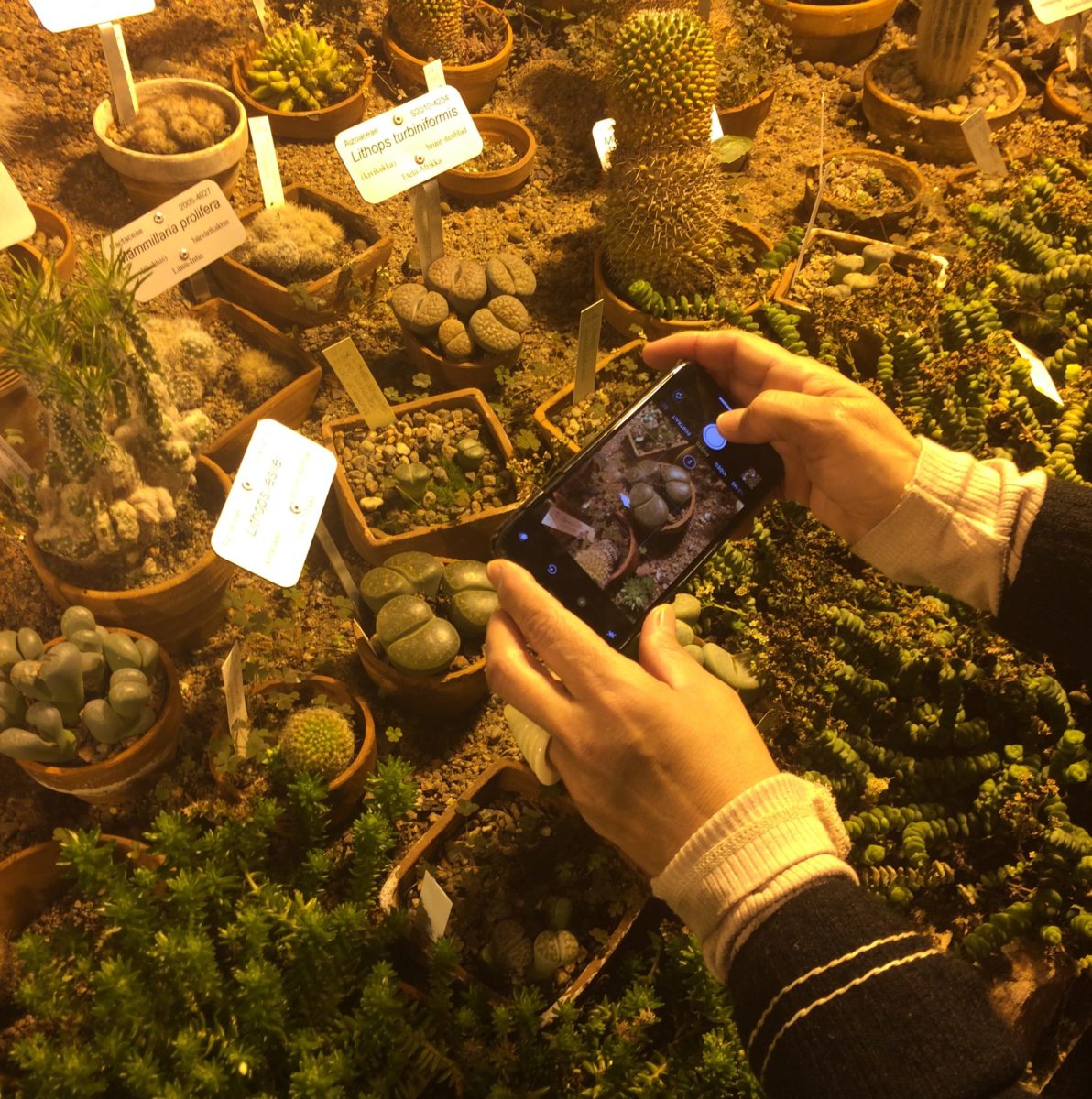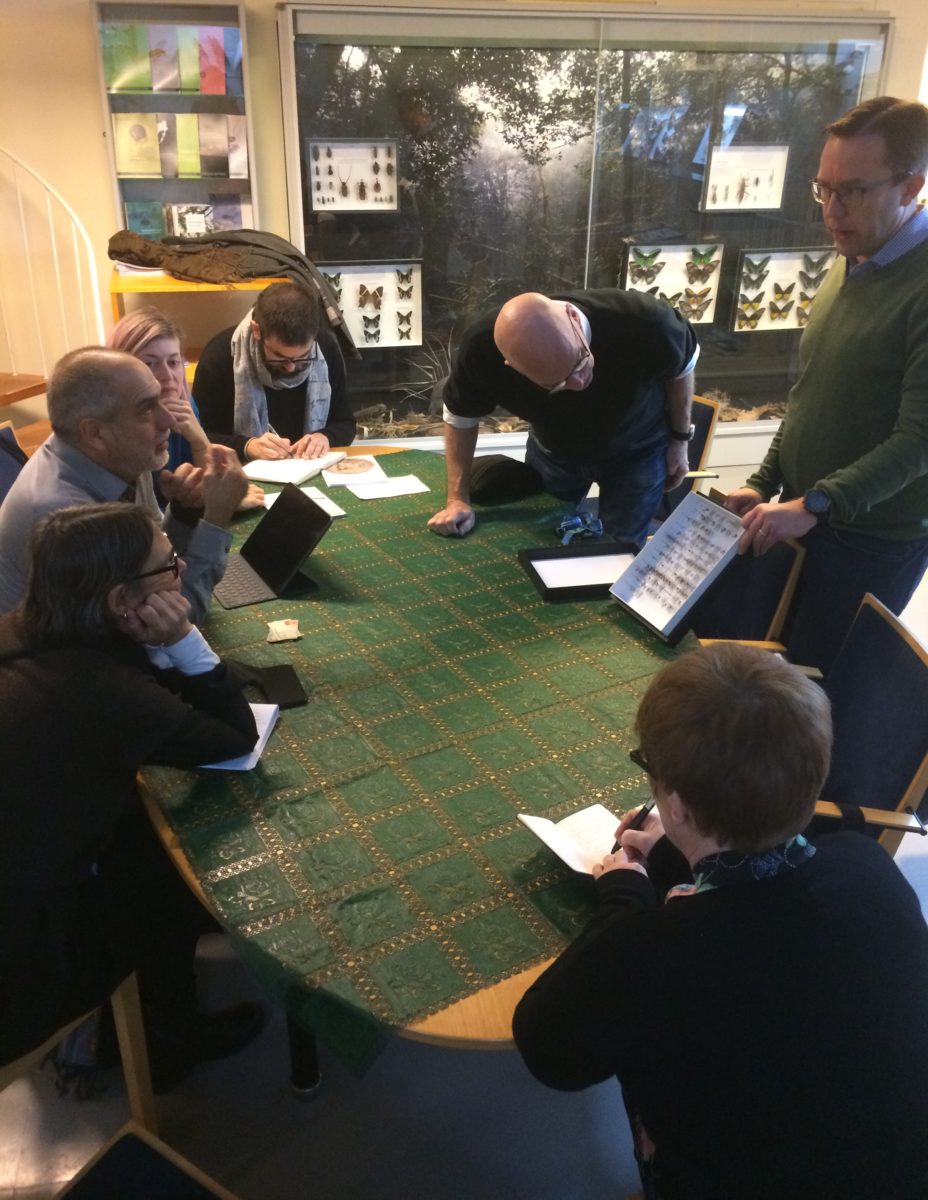Michy Marxuach & Fernando Lloveras
6.-8.1.2020
Turku
What might be the role of botanical gardens, with their controlled climates, for the species survival? And what may we salvage from local knowledges and herbologies for the future that is already unfolding in the present? What kind of methodologies of situated and embedded observation in our field work, and modes of repair as well as prepare, are needed today? How can our transhemispheric dialogue provide support structures for locally grounded work in all its planetary reverberations?
These questions were raised during an intense few days of dialogues with Michy Marxuach and Fernando Lloveras, visiting the Nordic region for the first time from Puerto Rico. Following an evening of discussions and a fleeting appearance of snow in Stockholm, Michy and Fernando continued with CAA on a slow eleven-hour cruise through the unusually warm and grey winter landscape of the interlaced archipelagos between Stockholm, Åland Islands and Turku. The day-long journey gave insight into the region’s particular geography, which has connected the histories of the peoples, cultures and ecosystems across the Baltic Sea for millennia. The archipelagos continue to be shaped by the ongoing glacial rebound of land rising approximately half a centimetre per year.
On arrival to Turku, intimate transhemispheric connections between the distant regions – the Caribbean and the Baltic Sea – through waterways and bodies of water were mapped out at the Archipelago Research Institute. Changing weather patterns due to climate change become tangible in the observations of air and ocean currents across the Atlantic. Diverse, locally specific phenomena and transformations in the ecosystems are integrally entwined through these planetary flows. Even microplastics discovered in the plankton and the food chain of the Arctic Sea may have their origins in the Caribbean as much as in the Baltic Sea.
While accelerating numbers of the world’s different species of flora and fauna are facing extinction, it is estimated that eighty per cent of them are not yet known to science. At the Biodiversity Unit of Turku University, we got to witness a collection of dozens of tropical parasitic wasp species, waiting to be identified. We also visited old technologies of observation that are becoming obsolete today, and learnt how it is increasingly difficult to study the night skies here due to the ever more persistent cloud cover. Yet the one thing that does not change is the length of daylight, determined by the latitude of the specific ecosystems, as the subarctic field research focused on the adaptation of plant species reminds us. Some modes of observation, embedded in the local ecosystems, appear everything but outdated. Grounded research, with long-term commitment, seems rather acutely urgent.
Thank you, once again, Ilppo Vuorinen and Jari Hänninen of Archipelago Research Institute, Ilari Sääksjärvi at Biodiversity Unit, and Pasi Nurmi at Tuorla Science Centre for sharing your research with us at Turku University. Thank you, FRAUD (Audrey Samson and Francisco Gallardo), Saara Ekström and IC-98 (Visa Suonpää and Patrik Sönderlund) for joining our conversations, and Lotta Petronella and Sami Tallberg for hosting and nurturing us on the island of Ruissalo.
The ongoing collaboration and transhemispheric exchange with Michy Marxuach (La Esquina) and Fernando Lloveras (Para la Naturaleza, Conservation Trust of Puerto Rico) has been made possible by the initiative of Luis Berrios-Negron. Thank you Jonatan Habib Engqvist and CRIS / NFK Nordic Art Association for co-hosting this visit with CAA, supported by Nordic Culture Point and Nordic Culture Fund.
Read more:
Transhemispheric Fieldnotes

